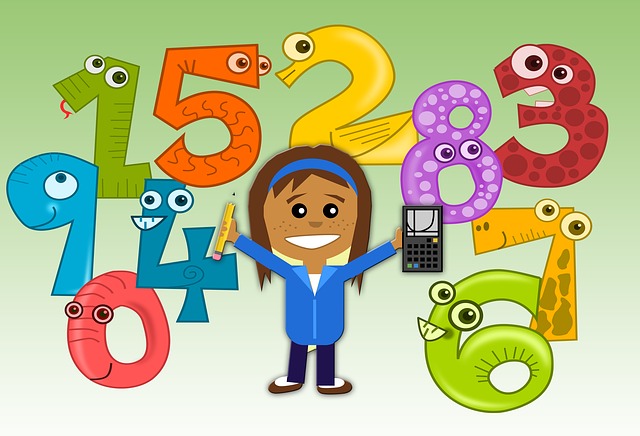Let’s be honest—math isn’t always a crowd favorite. In fact, many kids (and let’s face it, adults too) think of math as boring or stressful. But it doesn’t have to be that way!
So, how can we turn math into something your kids actually look forward to? Let’s explore some creative, hands-on ways to make math fun, engaging, and yes—even exciting.
1. Incorporate Games into Learning
If your kids love games—and most do!—then bringing games into your math routine is a no-brainer.
Think board games, card games, and even simple math challenges you create yourself. Whether it’s a quick matching game or something more strategic, games keep kids engaged while sneaking in solid learning. It’s learning through play, and it works.
You can start with basic number games and move up to things like math puzzles or logic challenges as their skills grow.
2. Use Real-Life Examples
If you want math to stick, it has to feel real.
Instead of just teaching what a fraction is, have your child measure ingredients while baking cookies or doubling a recipe. Suddenly, ½ and ¼ aren’t just abstract numbers—they’re part of making something delicious.
Use opportunities in everyday life to show how math is used in cooking, shopping, building, or budgeting. The more kids see math in action, the more they’ll understand why it matters.
3. Visual Aids Are Your Friend
Visual learners especially benefit from seeing math concepts laid out in colorful, meaningful ways.
Try using charts, number lines, manipulatives like counting blocks or coins, and picture books focused on math topics. Not only do these tools help kids grasp tricky ideas, but they also make your math space feel more interactive and inviting.
4. Make Word Problems Fun
Math problems don’t have to sound like a textbook. You can turn even basic arithmetic into a fun, story-filled adventure.
For example:
- “What is 4 minus 1?” vs.
- “John has 4 apples and gives one to his friend. How many apples does he have left?”
Which one sounds more fun to a kid? (Spoiler: it’s the apples.) Try using your child’s favorite characters, toys, or themes to craft silly or playful word problems that still get the job done.
5. Pick a Curriculum That Works for Your Family
Choosing a math curriculum can feel overwhelming—there are so many out there, and everyone seems to have a different favorite.
The best thing you can do is start with what fits your child’s learning style, your teaching style, and your family’s overall homeschooling approach. Ask other homeschoolers for feedback, read reviews, and don’t be afraid to try something and switch later if it’s not a good fit.
Some kids thrive with a hands-on curriculum, while others do well with a more traditional structure. The right curriculum is the one that works for you.
6. Promote a Positive Math Mindset
For some kids, just hearing the word math brings on anxiety. But that mindset can be shifted!
It’s important to show your child that everyone can be good at math. There’s no such thing as a “math person” and a “non-math person”—it’s all about growth, effort, and practice.
Also, be mindful of how you talk about math. If you had a rough time with it growing up, try not to pass that along. Instead, model curiosity, perseverance, and a positive attitude—even when things get tricky.
And remember: mistakes are actually a good thing! They show our brains are learning and growing. Praise your child for trying, thinking, and problem-solving, not just for getting the right answer.
7. Build a Strong Conceptual Foundation
Math isn’t just about memorizing formulas—it’s about understanding why things work the way they do.
Focusing on conceptual understanding (sometimes called “new math”) helps kids truly grasp the relationships between numbers and operations. That means when they learn one concept—like place value—they can apply it to all sorts of new problems, like decimals or addition.
Encourage your child to explore the “why” behind math steps. Show how place value, decomposition, and number pairs relate to each other. With this approach, they’re not just memorizing—they’re building lasting understanding.
8. Make Math a Part of Everyday Life
Math isn’t just for school—it’s everywhere. Once you start looking, you’ll see opportunities all over your daily routine.
Here are a few simple ways to sneak math into everyday activities:
- Calculate total costs and change while shopping
- Double a recipe for dinner
- Measure a room and figure out the area
- Weigh pets and compare their weights
- Estimate how long a movie or trip will take
- Count days until a birthday or event
- Run a pretend store or lemonade stand
These real-world applications help kids connect what they’re learning to the world around them—and that connection makes all the difference.
Final Thoughts: You Can Make Math Fun—Really!
Making math enjoyable for your kids might take a little creativity and a bit of patience, but it’s totally doable. And honestly? It’s one of the best gifts you can give them.
Try to include as many of these strategies as you can into your homeschool routine. Remember, there’s no one-size-fits-all approach to teaching math—so feel free to experiment and see what clicks.
Keep it light. Keep it real. And most of all—keep going.
You’ve got this. And your kids? They’re more capable than you think.



